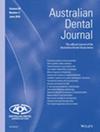Current endodontic practice and use of newer technologies in Australia and New Zealand
Abstract
Background
This study investigated endodontic clinical preferences, adoption of newer technologies and information sources among dentists and endodontists.
Methods
Dental and endodontic society members in Australia and New Zealand were surveyed online regarding their endodontic treatment preferences, armamentarium, information sources and continuing professional education (CPE) attendance.
Results
Complete responses were received from 71 endodontic specialists or postgraduates (Group E) and 139 general dentists (Group D). Most of Group E used dental operating microscopes (95.8%), endodontic cone-beam computed tomography (CBCT; 98.6%) and calcium silicate-based materials (CSBMs; 97.2%), significantly more (P < 0.001) than Group D (86.3% used loupes, <32% used CBCT for endodontics or CSBMs). Most respondents used dental dam always for endodontics (94.3%), electronic apex locators (EAL; 81.0%) and engine-driven nickel-titanium (NiTi) instruments (91.4%); Group E had more experience with engine-driven NiTi (P < 0.001). Endodontic CPE attendance was highest at dental association programs (P < 0.001) while hands-on NiTi training attendance was highest via commercial companies (P < 0.05). Online information sources were commonly used (38.8% of Group D, 59.2% of Group E).
Conclusion
Dental dam, EAL and engine-driven NiTi were almost universally used. The endodontic group reported high adoption of newer endodontic technologies. Endodontic CPE and information sources should be further surveyed as online engagement evolves. © 2023 Australian Dental Association.

 求助内容:
求助内容: 应助结果提醒方式:
应助结果提醒方式:


